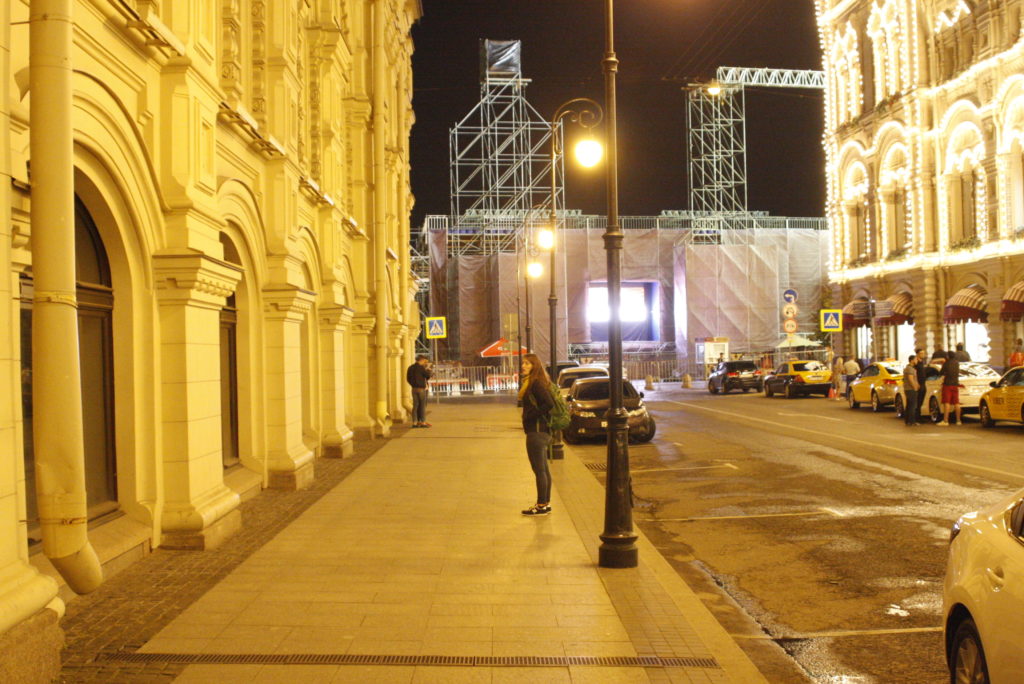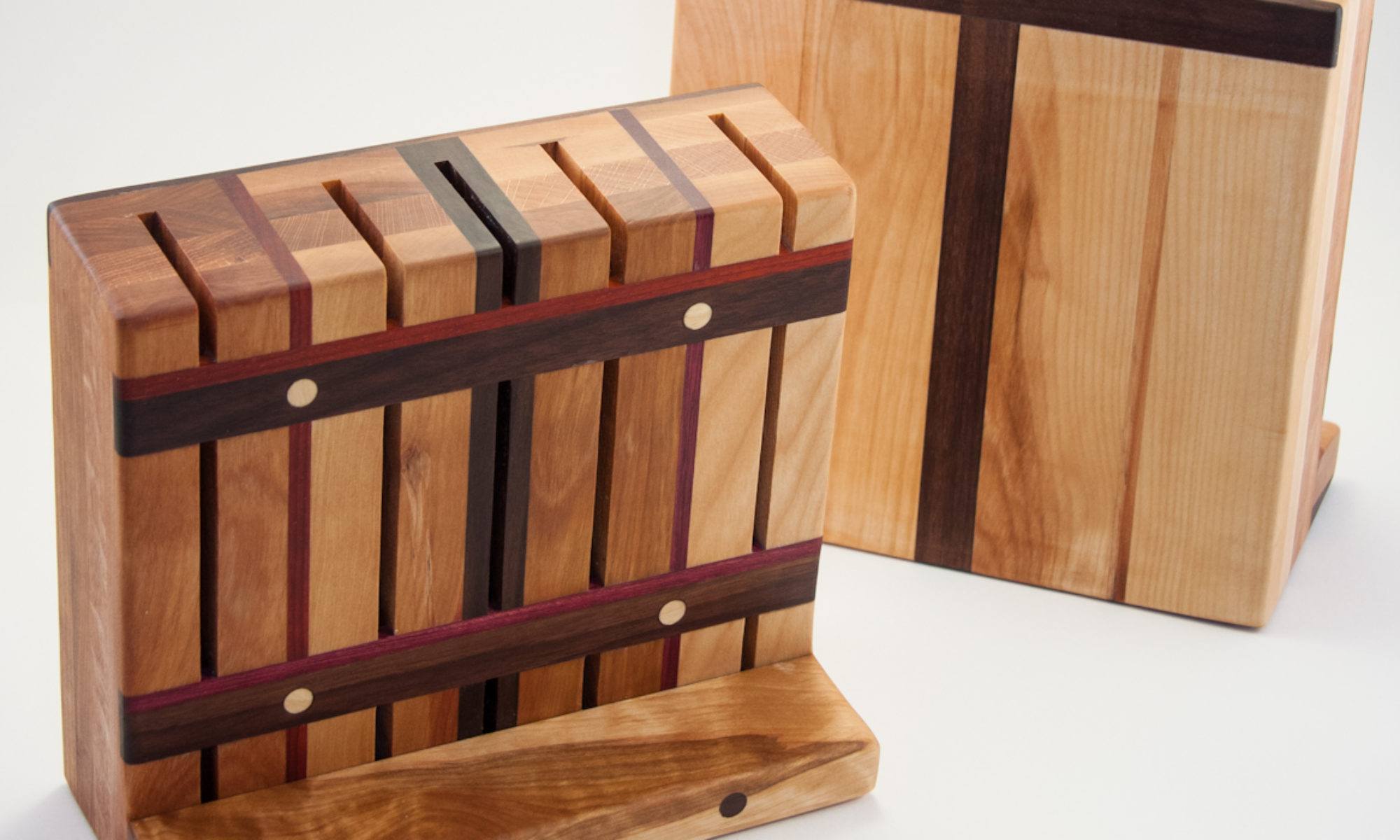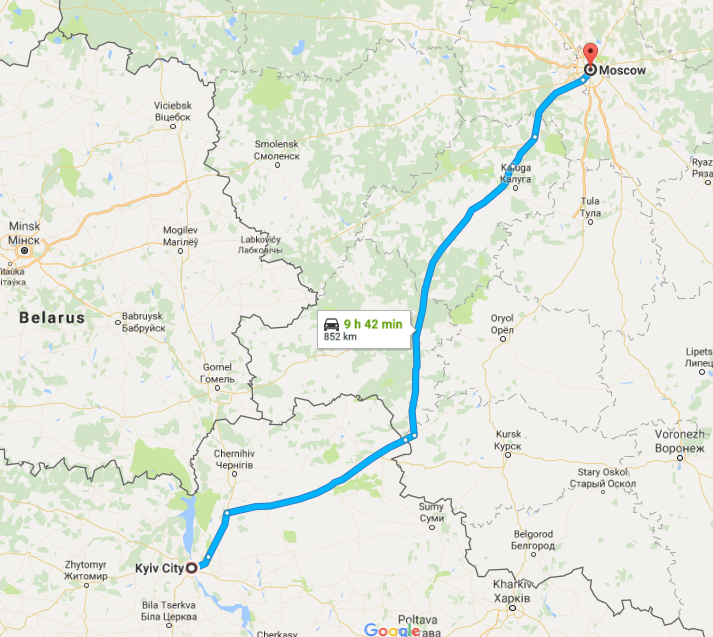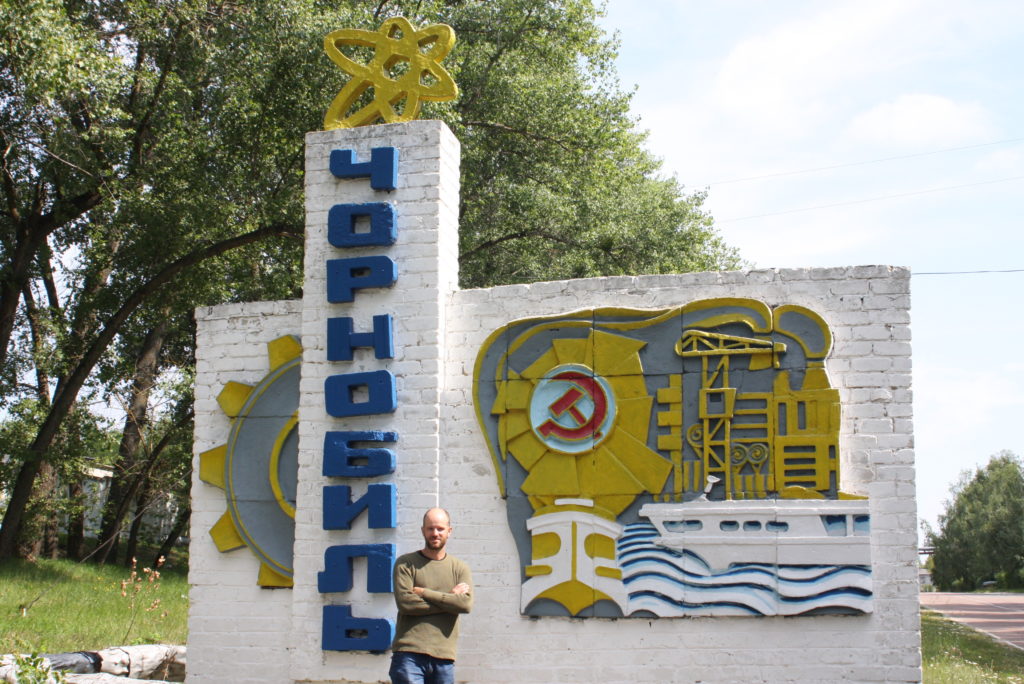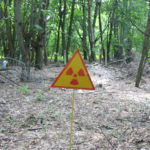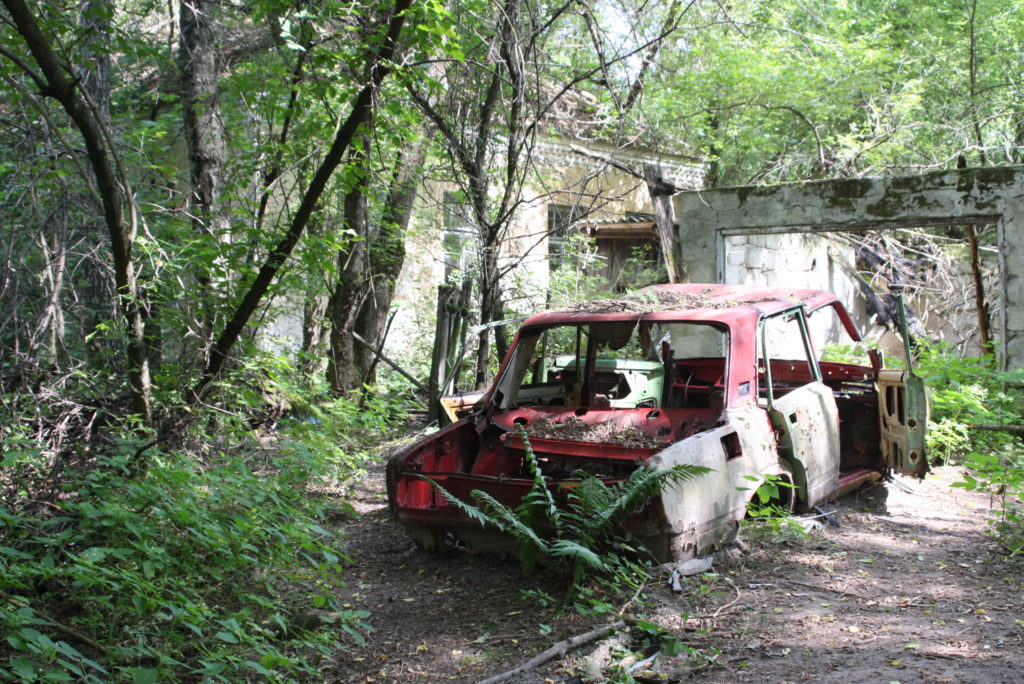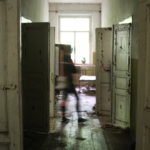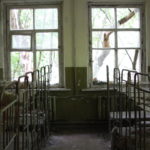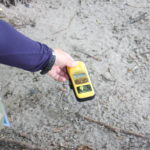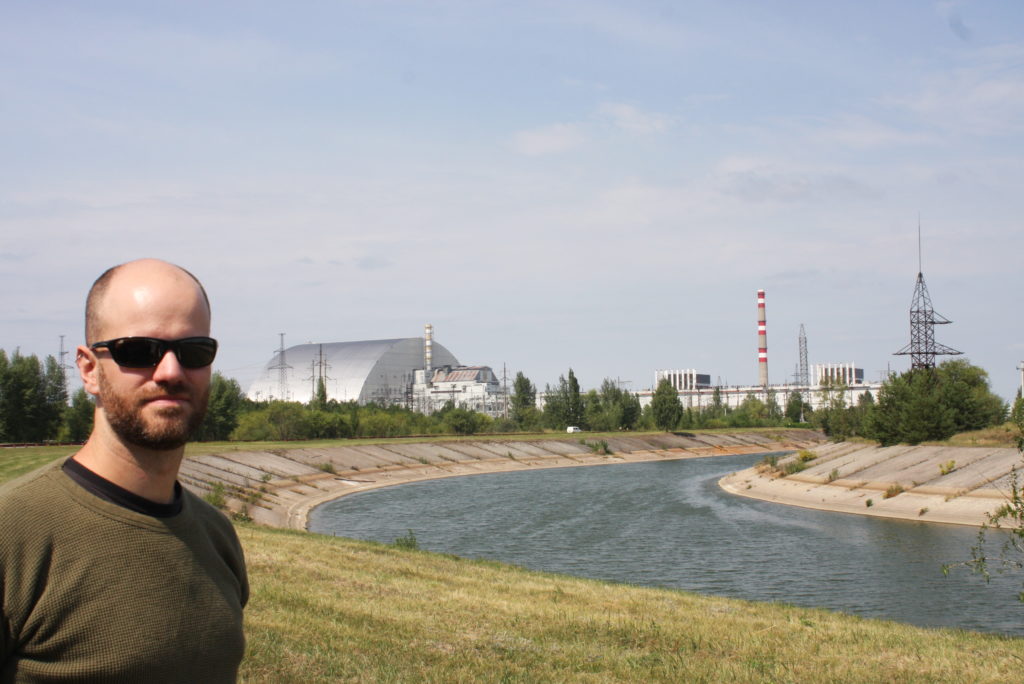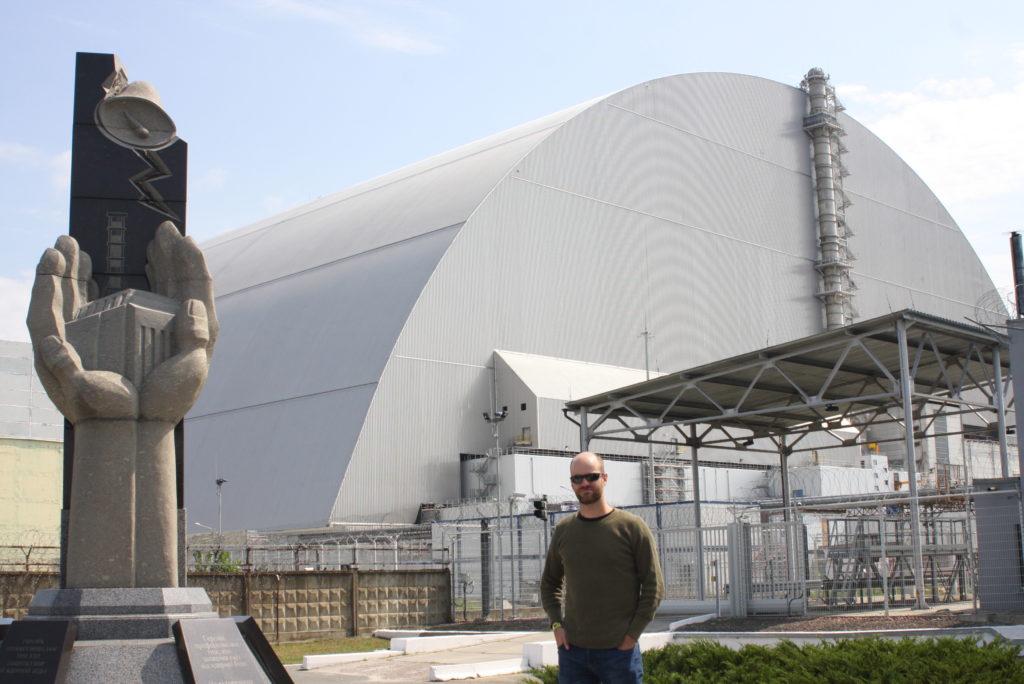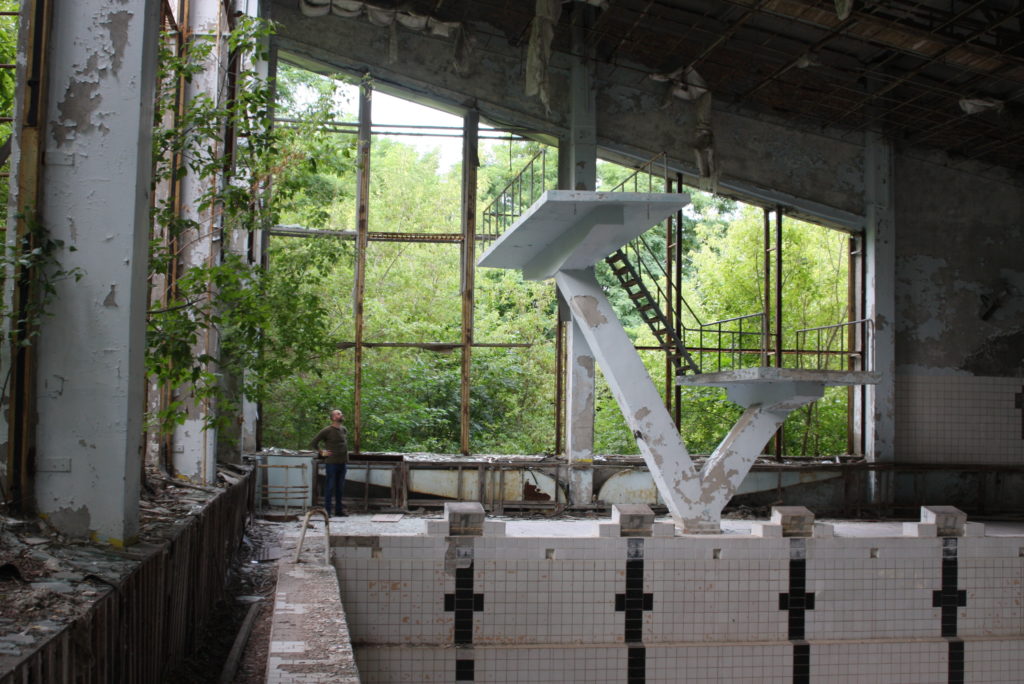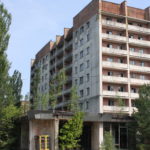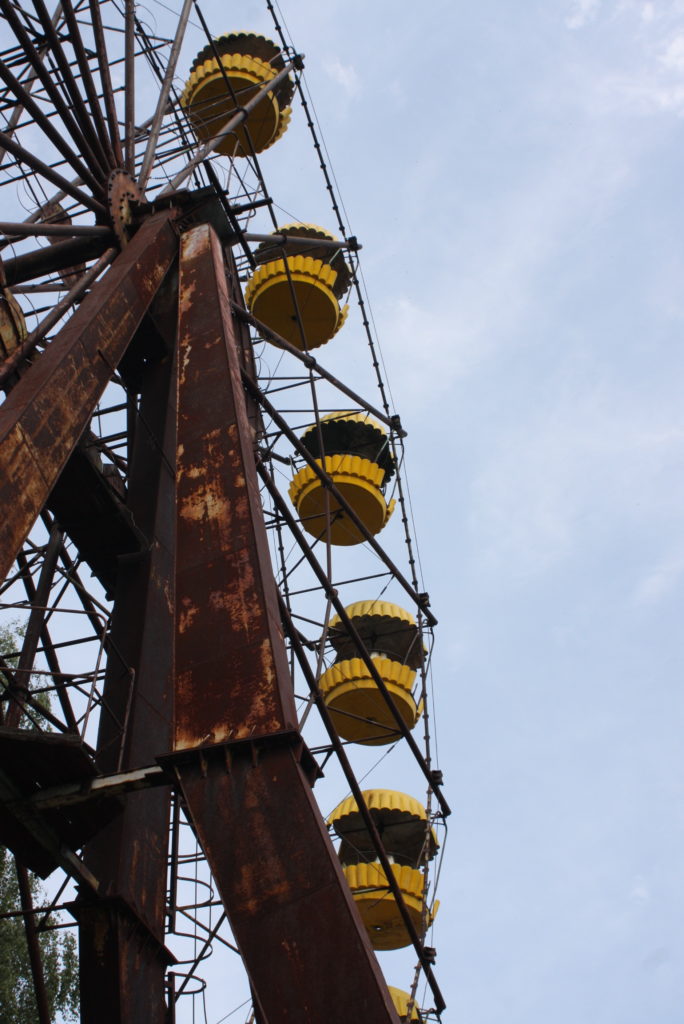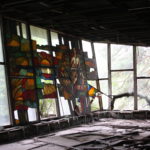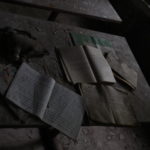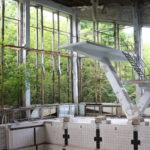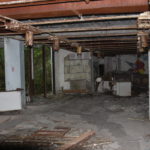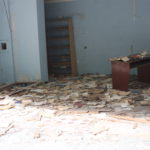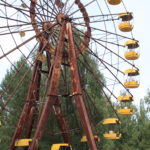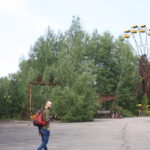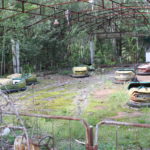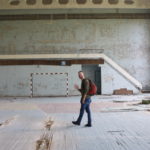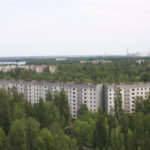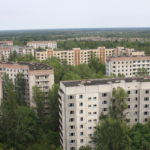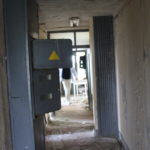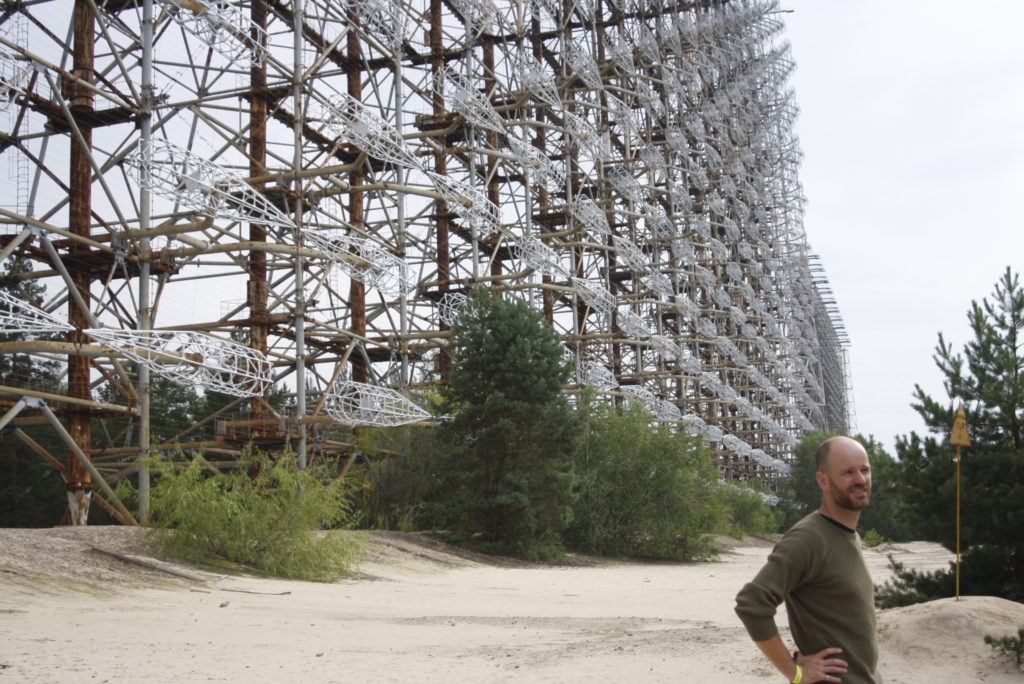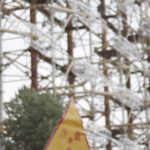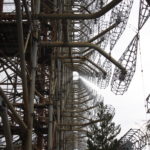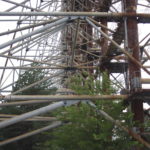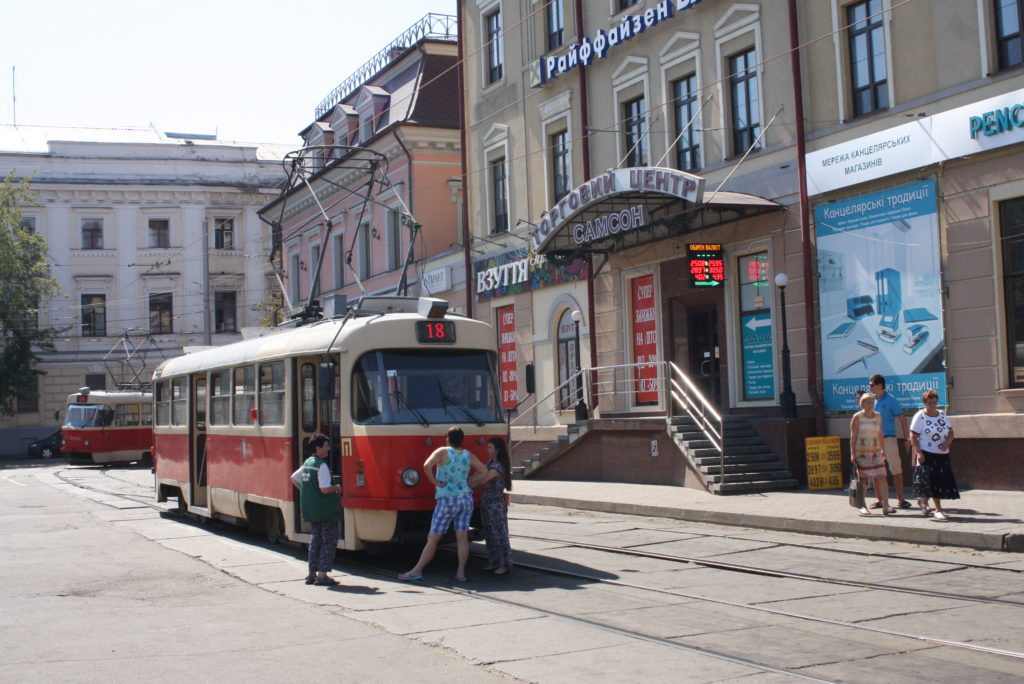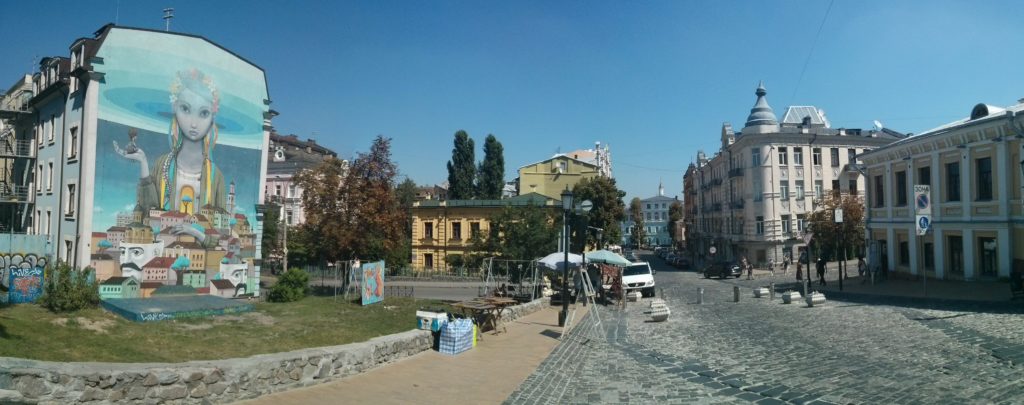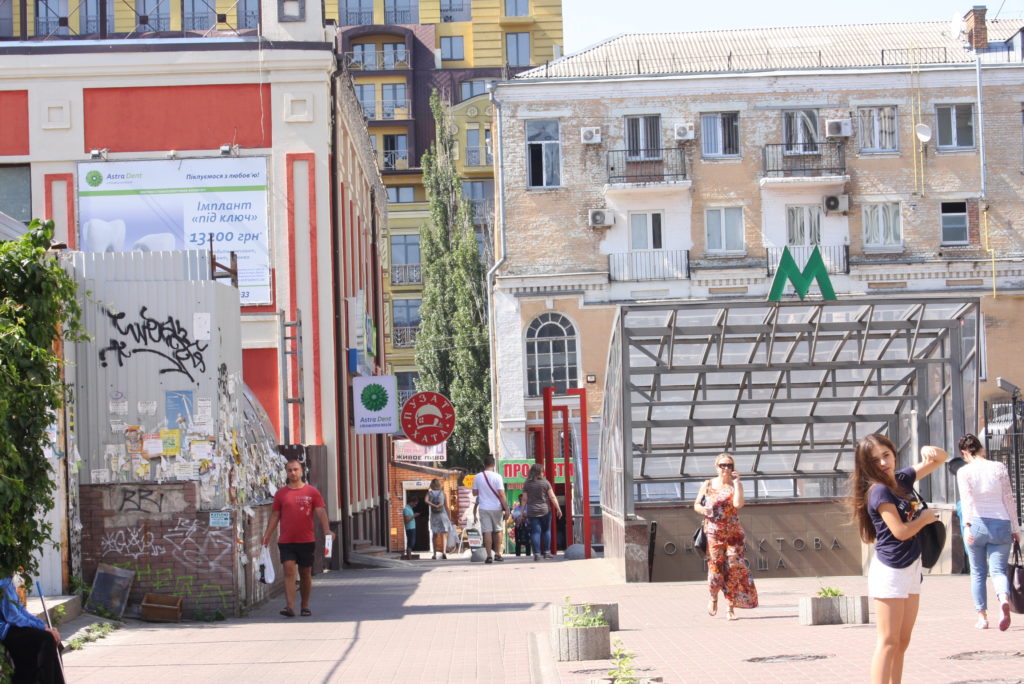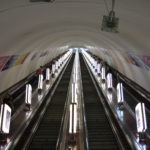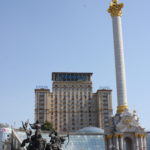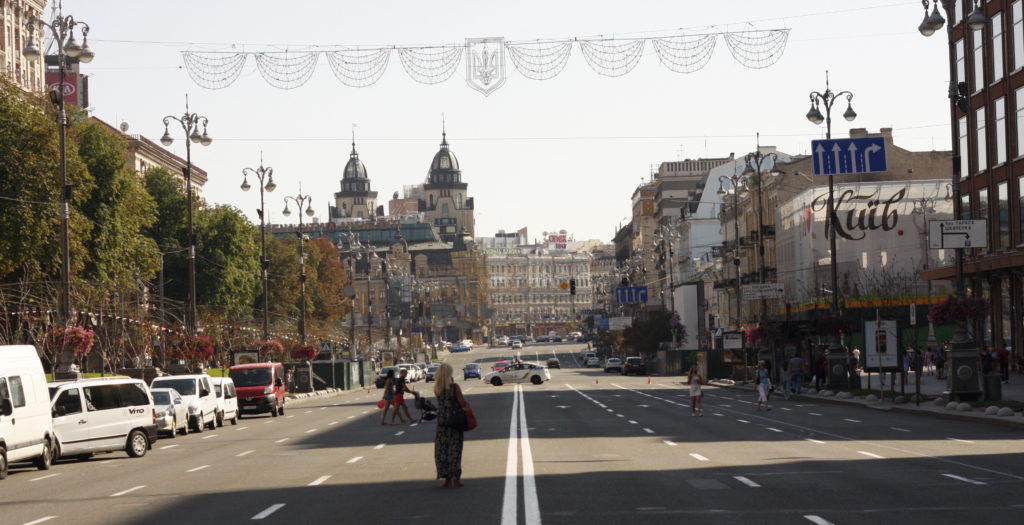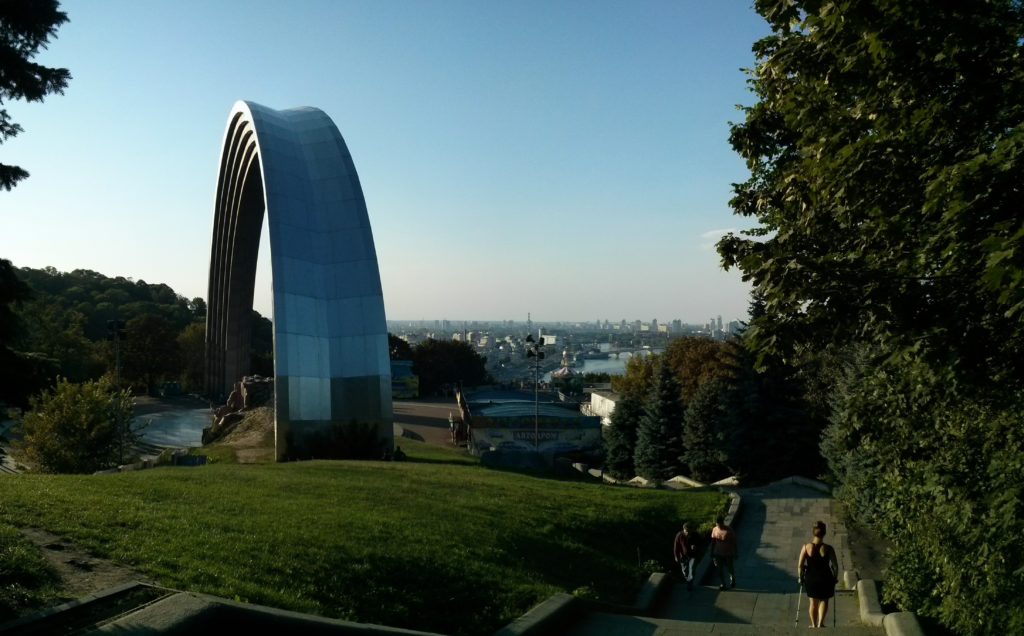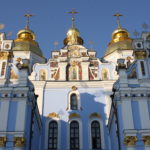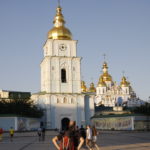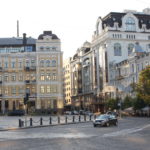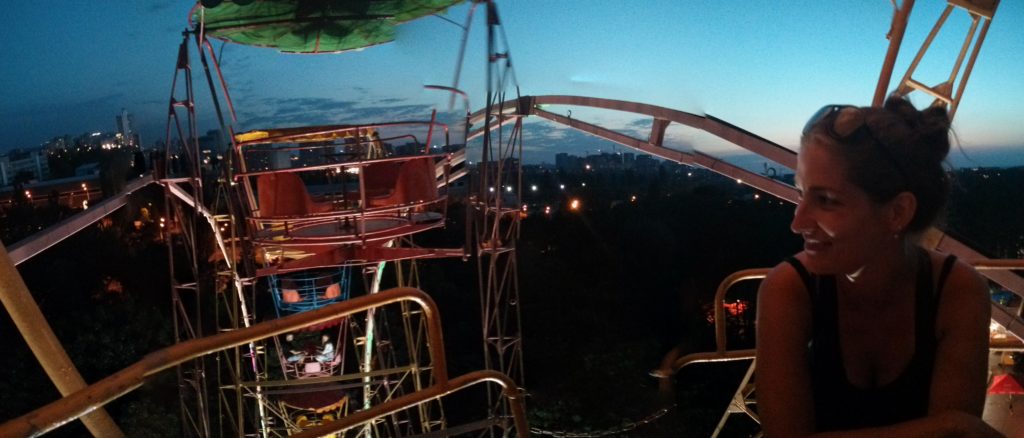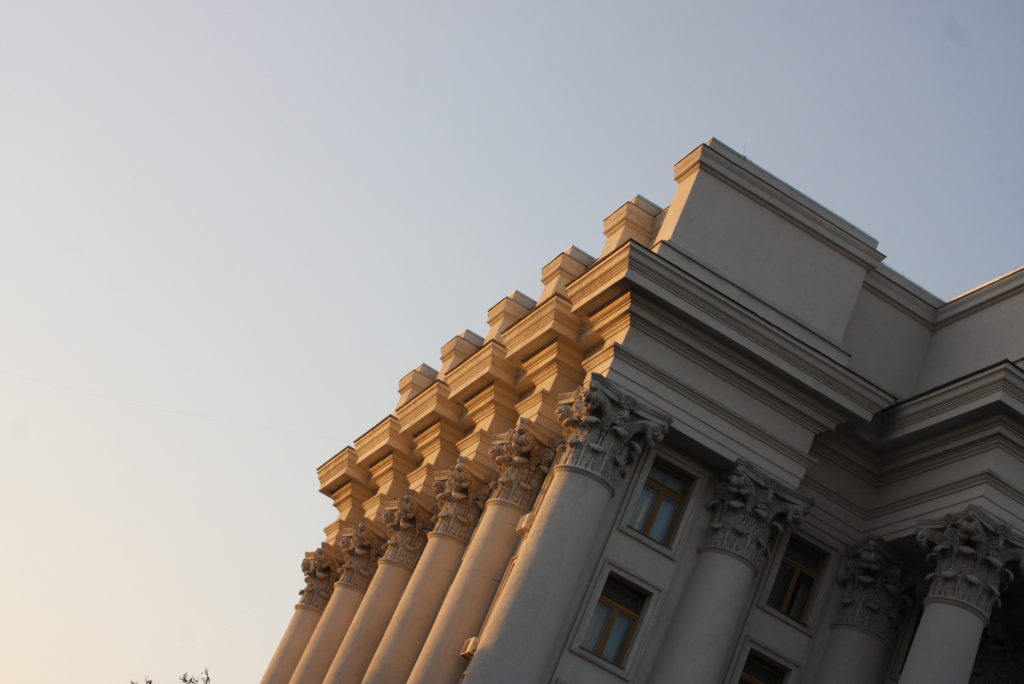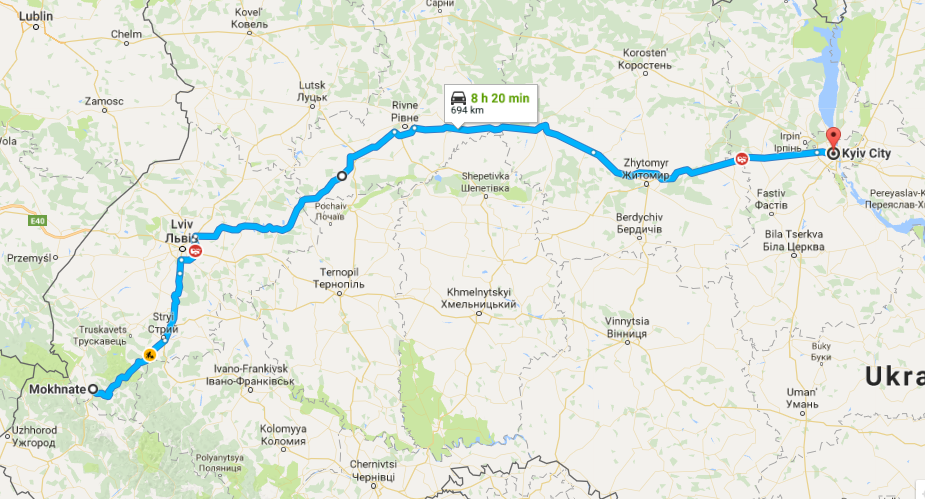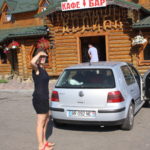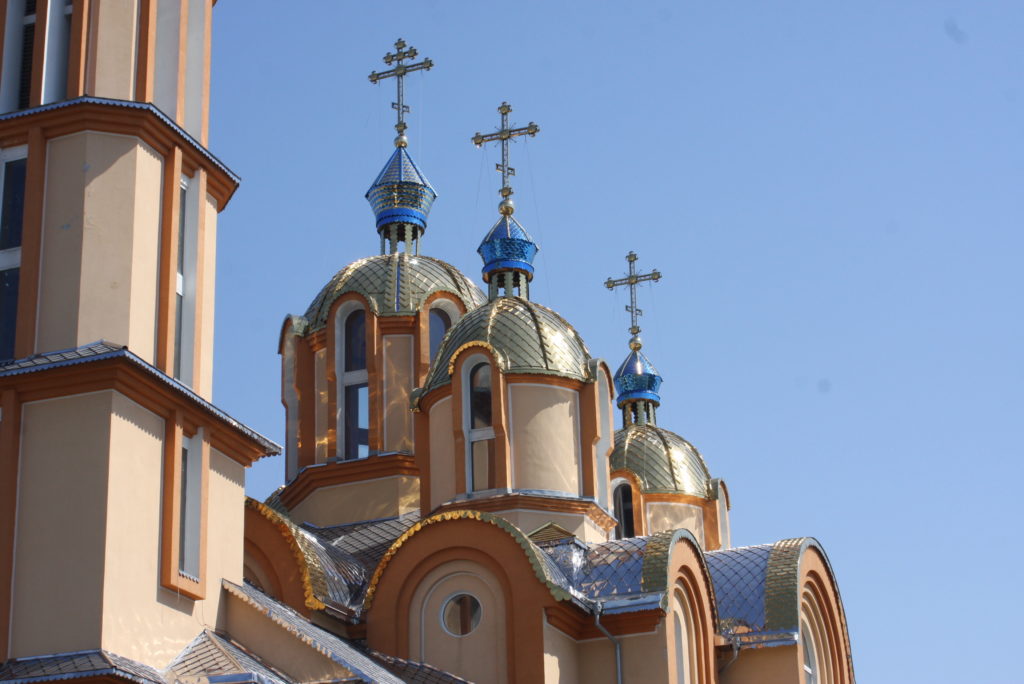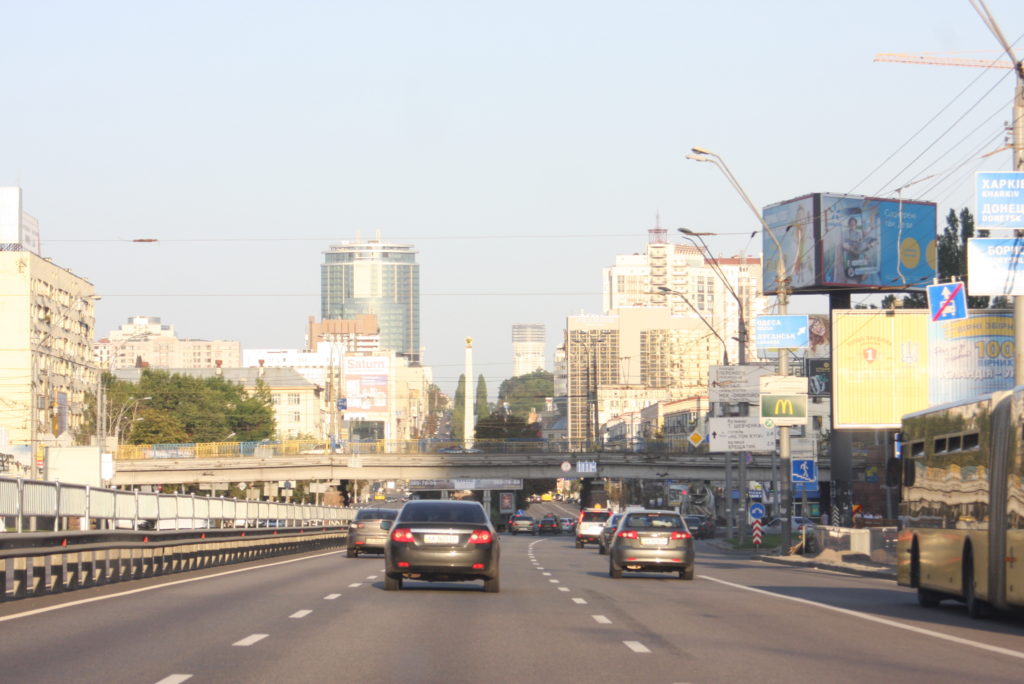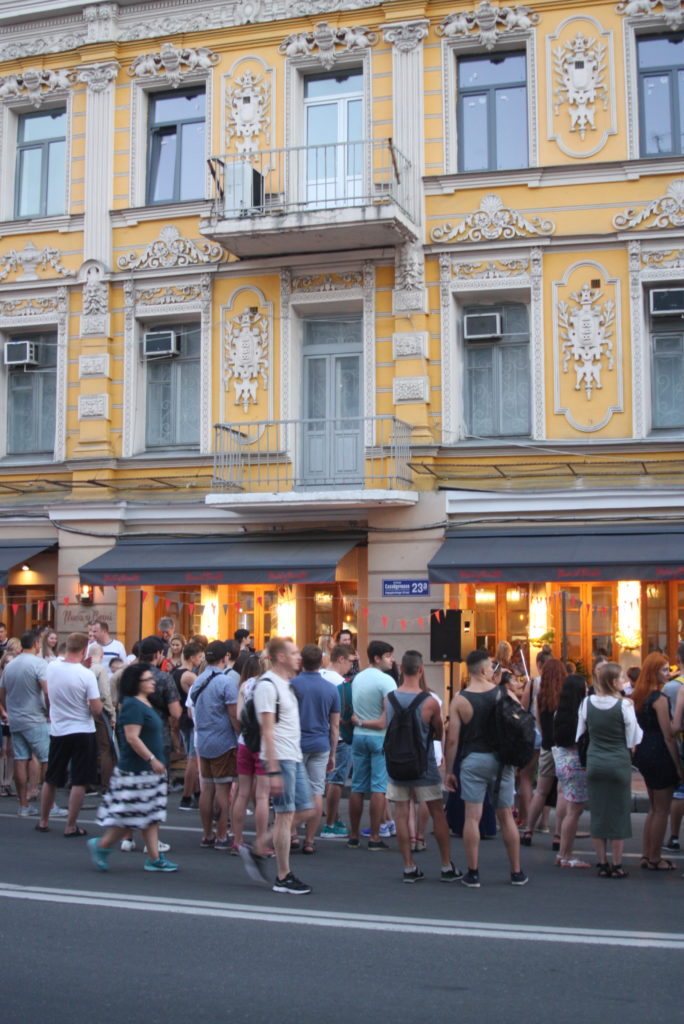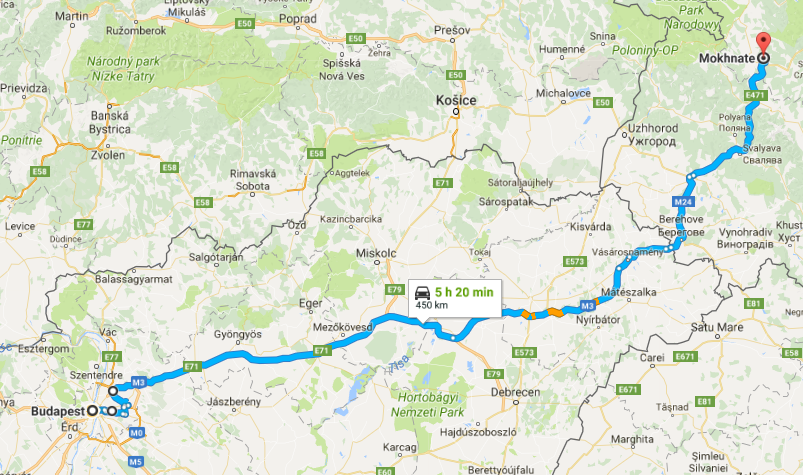- Date : 14-15 août 2017
- Départ : 21h00
- Arrivée : 20h00 (le lendemain)
- Température : nuit, ciel couvert puis soleil
De retour de notre excursion à Tchernobyl vers 20h00, nous avons à peine eu le temps de profiter d’un dernier restaurant qu’il fallait déjà quitter la ville. Dommage, Kiev était super charmante, intéressante et relax; elle aurait facilement mérité deux ou trois jours supplémentaires, mais il fallait continuer le périple. Notre visa russe d’un mois était déjà débuté depuis deux semaines et nous voulions avoir suffisamment de temps à Moscou, Saint-Pétersbourg et une autre ville (probablement l’ancienne Stalingrad, maintenant appelée Volgograd).
J’avais prit la peine d’aller questionner la réception de l’auberge sur le passage de l’Ukraine vers la Russie, mais les employées ne m’avaient été d’aucune aide. Pourtant, Audrey et moi se doutions très bien que l’entreprise n’allait pas être une mince affaire. Non seulement, les frontières à l’est du pays sont fermées en raison de la guerre, donc une partie du trafic était redirigé vers le nord, mais en plus, il y avait somme toute peu de points de passage. Bref, c’est pourquoi nous avons décidé de partir le soir même, arriver à la frontière tard (pour la passer rapidement) et nous trouver un hôtel non loin. Sur papier c’était béton. Nous nous étions levés très tôt pour aller à Tchernobyl, alors il allait falloir combattre la fatigue à grand coup de Red-Bull, mais avec de la motivation, nous en étions physiquement capables.
Après quelques erreurs de direction, nous étions sortis de Kiev et de retour sur les routes Ukrainiennes à deux voies. Elles étaient dans un état acceptable, mais j’anticipais le moment où nous allions tombés sur un énorme trou. Nous n’avions pas roulés énormément de nuit jusqu’à maintenant, mais depuis la prise de possession de la voiture, j’avais remarqué que les phares étaient mal réglés. Les hautes étaient relativement efficaces, mais les feux de croisement n’éclairaient que directement en avant du véhicule et à chaque trou qui passait, c’était toujours trop tard pour que je l’évite. Sur les routes Ukrainiennes, c’est préoccupant. Quelques tentatives rapides d’aligner les faisceaux avaient été tentées, mais sans grand succès. Finalement, j’ai craqué et me suis arrêté avec la ferme intention de ne pas repartir tant que ces stupides phares n’allaient pas correctement illuminer la route. Après une demi-heure de bidouillage, c’était chose réglée.
Tout compte fait, la qualité de la chaussée aura été numéro 1 jusqu’à la frontière que nous avons réussi à atteindre dans les temps prévus et ce même un petit arrêt par les policiers pour léger excès de vitesse. Heureusement l’agent était de bonne humeur nous a laissé filer. Une fois en ligne pour le contrôle côté Ukrainien, nous avons immobilisé le véhicule et nous sommes félicités, content d’avoir atteint notre objectif.
- 1h30: arrivée à la frontière
- 2h00: rien n’a bougé
- 2h30: on a avancé un peu
- 3h00: ça ne bouge pas vite…
- 3h30: finalement, le garde prends nos papiers
- 3h35: un militaire Ukrainien nous demande si on a de l’argent canadien sur nous, car il tient une collection de pièces de monnaies. Pas de chance pour lui, on s’est vidé les poches avant de partir.
- 3h45: on commence à fouiller notre véhicule, le numéro de série de la voiture est pris en note, le douanier nous demande de vider notre coffre et d’ouvrir nos sacs. Il tombe sur notre caisse de vin (merde, on a acheté une bouteille dans chaque pays visité pour se la déguster uns fois en camping en Asie Centrale) et inspecte son contenu. Prenant une bouteille de vin français, il nous regarde et dit: “Present?” Pas le choix de dire oui. Il met la bouteille dans son manteau, met un terme immédiat à la fouille et nous souhaite bon voyage.
- 4h00: on se met en file du côté Russe. Je sors inspecter nos bouteilles pour voir laquelle le douanier nous a chipé, j’espère que ce n’est pas notre Gaillac bio. Ouf! C’est un truc à 2,50 Euros. Je crois qu’il a été accroché par la pastille dorée “Lauréat du concours parisien” ou un truc du genre (un prix bidon fait pour mousser les ventes)
- 4h30: ça ne bouge pas
- 5h00: le jour se lève, Audrey et moi avons fait une croix sur le sommeil
- 5h30: ça avance un peu, les Ukrainiens et les Moldaves autour de nous ont l’air de trouver que tout baigne alors ça nous rassure.
- 6h00: on approche du côté Russe. Tout le monde est hors de son véhicule et ça fume partout pour tuer le temps. Des femmes se promène avec des valises de nourriture et des thermos de café. Dommage, nous avons écoulé notre argent Ukrainien avant de passer la frontière.
- 6h30: c’est long, voilà 24 heures que nous sommes debout
- 7h00 le douanier Russe prend nos papiers, nous étampe ça et nous les remet promptement. L’excitation monte en nous! On est presque en Russie. Quel soulagement, Audrey avait une crainte que notre visa ne nous permette pas de rentrer avec un véhicule.
- 7h05: on passe à la douane et l’on nous remet deux formulaires en Russe. Je vais gentiment voir le douanier, lui disant “niet Russki, English?”, il rentre dans son bureau et me remet une traduction Allemande. Je lui lance un regard interrogatoire et répète “English?”. Avec un ton agressif, il m’envoie promener.
- 7h30: Audrey et moi avons tenté tant bien que mal de compléter les formulaires avec un dictionnaire Français-Russe de poche et mes deux ans d’Allemand entre l’âge de 10 et 12 ans. Les formulaires nous sont renvoyés sans avoir été regardés, car il fallait que l’on fasse deux copies pour moi et non une pour Audrey et une pour moi.
- 7h40: On recopie de formulaire. En le remettant au douanier, celui-ci a raturé nos réponses et nous a lâché quelque chose en Russe indiquant probablement que nous étions cons. Il m’a ensuite montré un exemple en Russe placardé sur un mur.
- 7h45: Finalement, le conducteur d’un véhicule voisin s’approche de nous et nous demande en Anglais si nous avons besoin d’aide. Il se nomme Ferenc, il est Hongrois et se rend à Moscou pour visiter sa copine. Un habitué de cette frontière, il nous confie qu’il est dans le processus depuis 2h00 et que de tels délais sont normaux. Ferenc parle et lit le Russe donc il nous traduit le formulaire et nous aide à le remplir. Finalement, ce n’est qu’une déclaration et douane et une garantie comme quoi nous nous engageons à ne pas importer le véhicule en Russie.
- 8h00: Changement de personnel, il ne passe plus rien pendant une heure. Ferenc nous entretient sur les nombreuses aberrations de l’administration Russe. Ils nous demande si nous avons été contraints de verser un pot-de-vin aux douaniers Ukrainiens, car il a dû payer 100 hyrvnia (c’était ça la “collection de pièce de monnaies”…) On lui répond que c’est un bouteille que ça nous a coûté. Nous partageons avec Ferenc notre étonnement face au peu de véhicules Russes en ligne pour passer la frontière. Il nous informe que l’Ukraine empêche les hommes de passer de peur que ces derniers aillent vers la Crimée. Ceci explique la présence de deux femmes russes derrière nous.
- 9h00: Changement de garde complété. On montre nos formulaires tout bien complétés au nouveau douanier, un homme bien en chair au visage puéril. Il nous les renvoie, car on a commis un erreur lors de la copie.
- 9h15: Je n’en peux plus, je me dirige vers le bâtiment pour aller au toilette et je me fais tout de suite engueuler par un militaire. Il me somme de lui montrer mon passeport. Je tente tant bien que mal de lui expliquer que c’est le gros douanier qui l’a. Finalement il me fout la paix.
- 9h30: Hourrah, nous formulaires ont été acceptés.
- 10h00: On passe de l’autre côté de la frontière et l’on attend qu’on nous remette le papier final. Ferenc nous indique qu’à l’intérieur du bâtiment, quelqu’un recopie les informations dans un ordinateur. Impossible de partir, car on aura besoin d’une copie authentifiée pour sortir du pays.
- 10h30: On nous remet le papier et mon passeport. On remercie Ferenc pour son aide et l’on se promet de se voir à Moscou pour un verre.
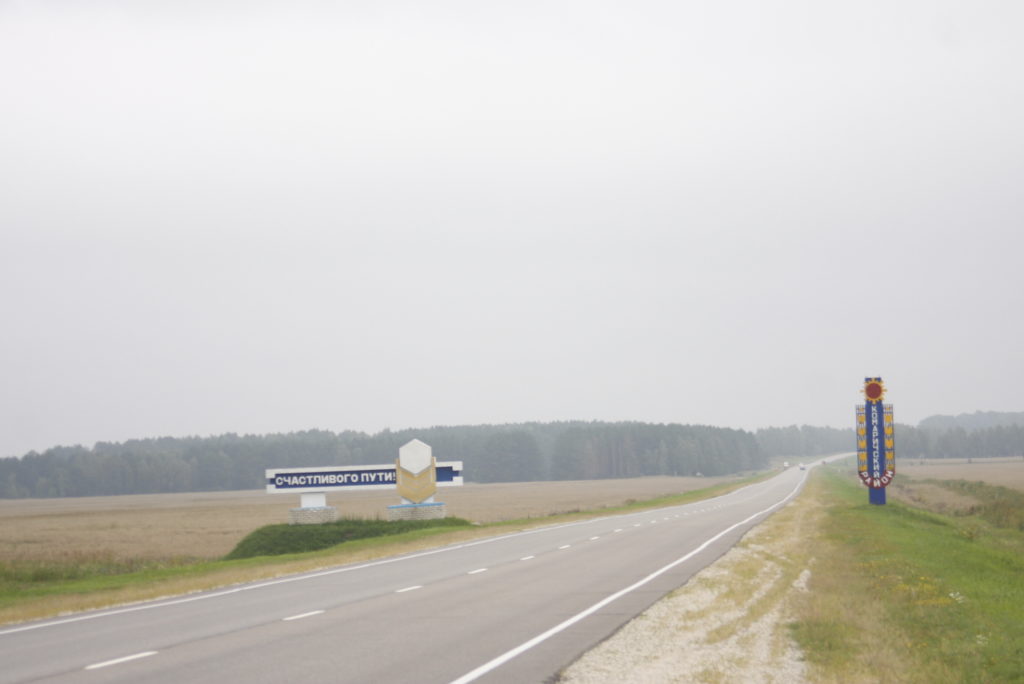
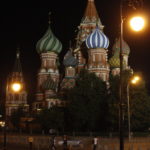
Nous nous remettons en route vers Moscou. Il nous reste un bon 500 kilomètres. Non loin de la frontière nous arrêtons pour nous ravitailler en Red-Bull. Après un moment, impossible de poursuivre, nous sommes simplement trop fatigués: arrêt obligatoire dans une station service pour faire un somme de 2h30 dans la voiture. La route vers Moscou est essentiellement rectiligne, plate et sans grand intérêt; pendant qu’Audrey conduit, j’écris nos péripéties en Ukraine. Finalement, on arrive à Moscou sur le coup de 18h30 et pour la suite, ce n’est qu’un long bouchon (4 accidents) jusqu’à notre auberge près de la place rouge.
Pleins d’adrénaline, nous sommes sortis chercher de l’argent (tâche compliquée par les sanctions économiques envers la Russie), dîner dans un restaurant cher et très médiocre puis nous sommes dirigés vers la Place Rouge: malheur, l’espace est envahi par des gradins et complètement clôturé.
